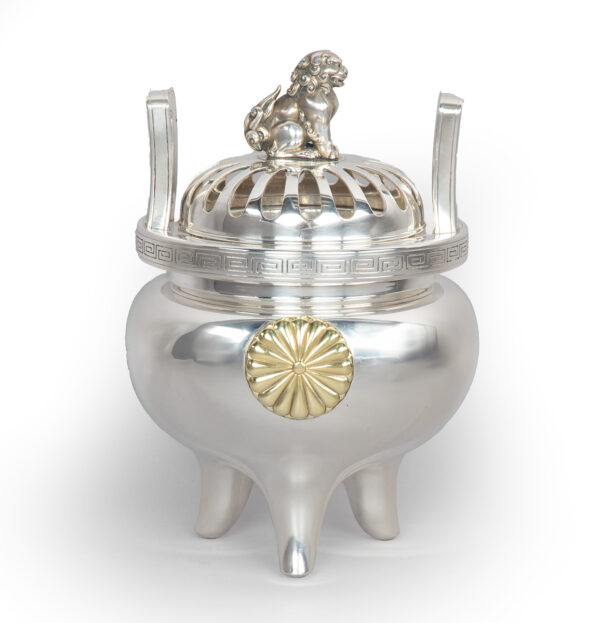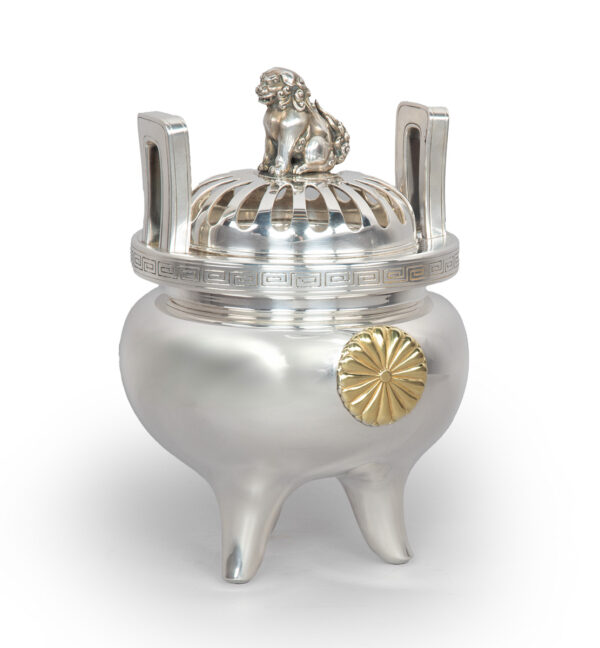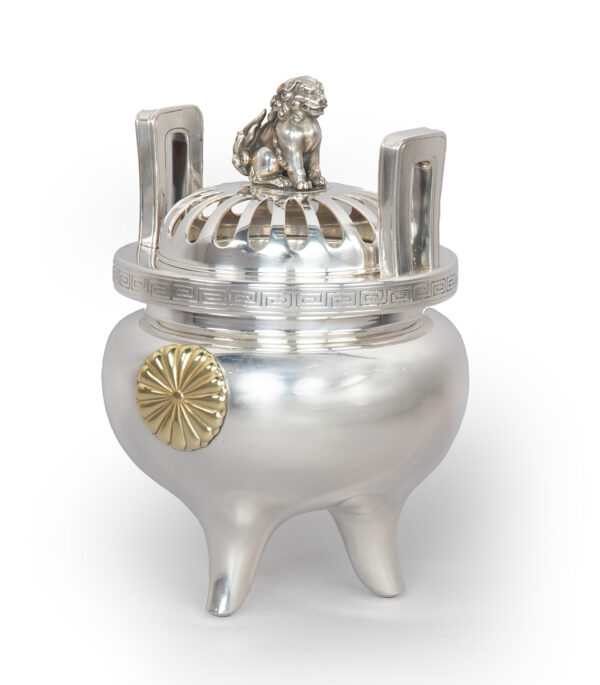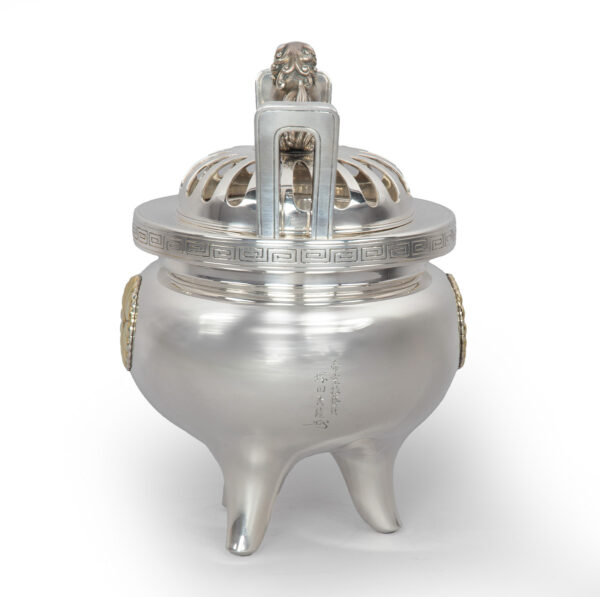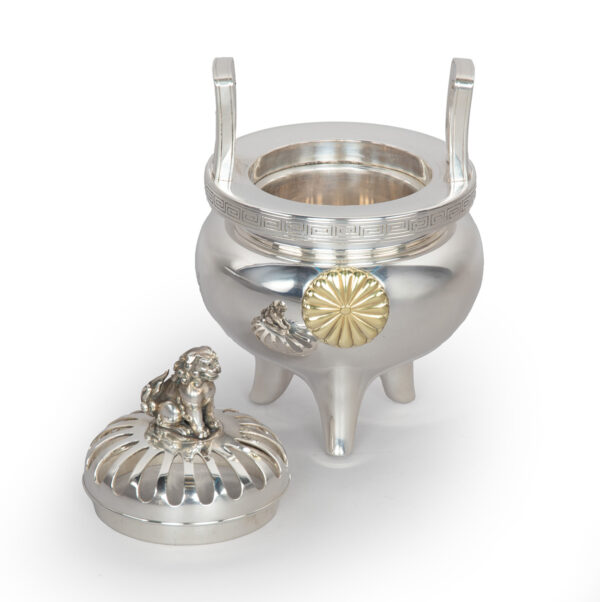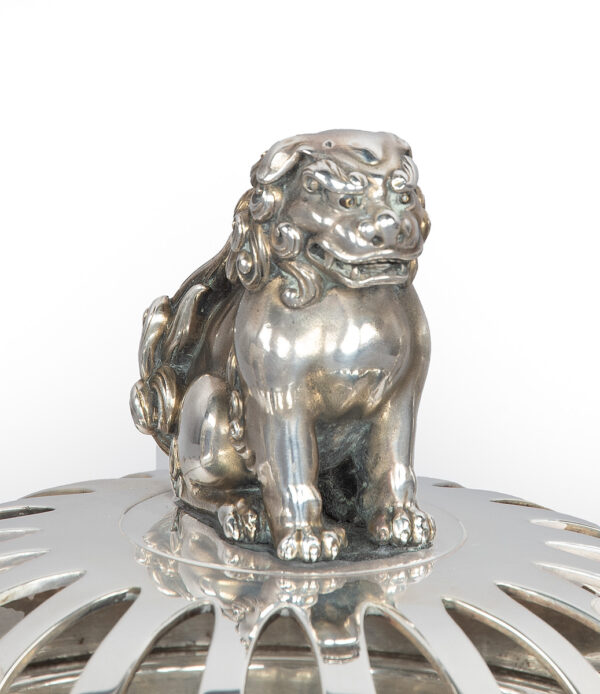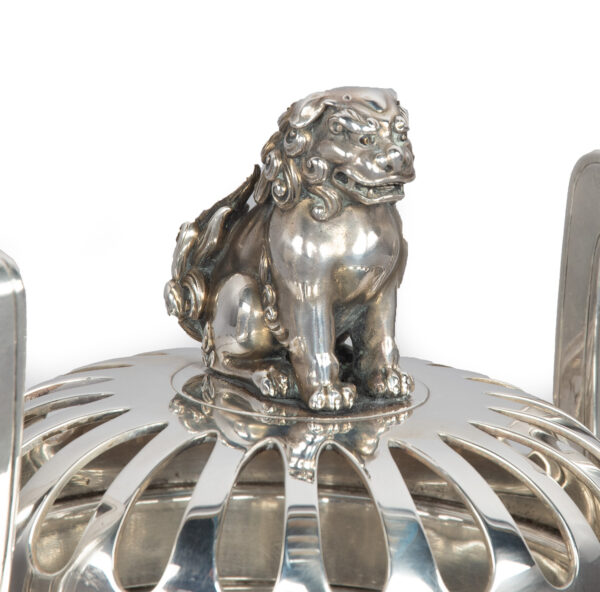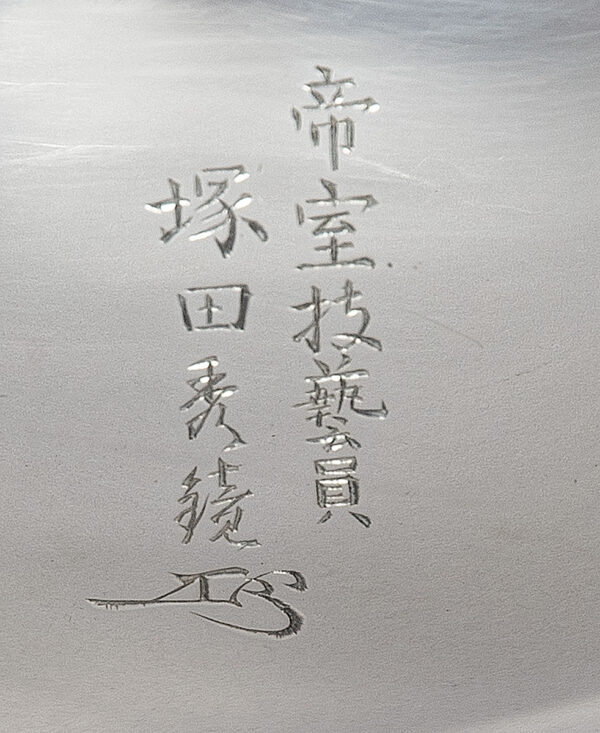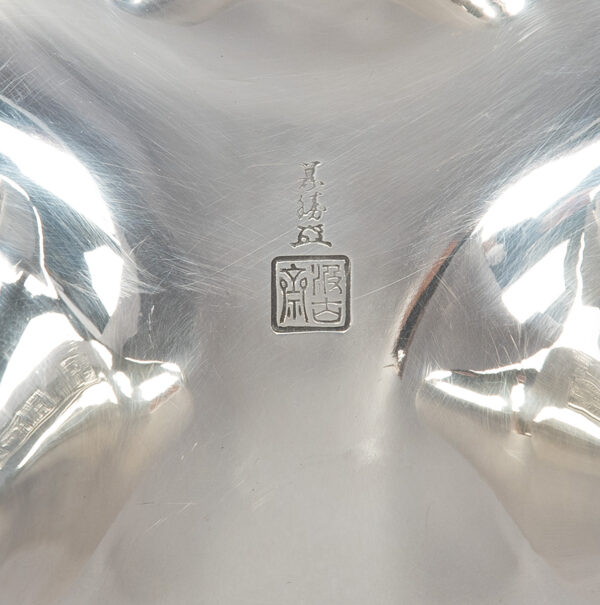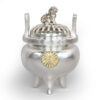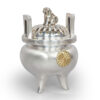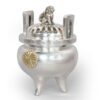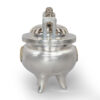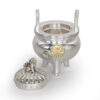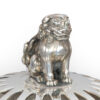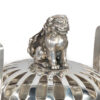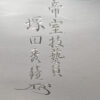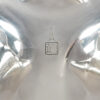As part of our Japanese works of art collection we are delighted to offer this large Meiji (1868-1912) or early Taisho Period( 1912-1926) pure silver Koro by the highly aclaimed Imperial artist Tsukada Shukyo (1848-1918), on this occasion in collaboration with Kurokawa Yoshikatsu. The globular body set on three legs with loop handles is inspired by the ancient Chinese ding form. The front and reverse each finely decorated with the Imperial chrysanthemum crest (kikkamonshō, 菊花紋章), rendered as a stylized chrysanthemum with sixteen full and sixteen half petals arranged in alternation, a motif reserved exclusively for the Japanese Imperial Household and among the most important state and symbolic emblems of Japan. The upper rim encircled by a continuous key-fret band. The cover finely pierced with a stylized chrysanthemum motif surmounted by a seated shishi. This larger scale incense burner fully signed, Teishitsu Gigei-in Tsukada Shûkyô and kaô, this particular signature would indicate a date of manufacture between 1913 when Shukyo was granted the Imperial artist status ( Teishitsu Gigei in) and his death in 1918.
Literature :
The seal to the underside of the koro indicates a collaboration with the metalworker Kurokawa Yoshikatsu (1867-1949) his art name Kyukosai, this artist is recorded as running a metal workshop in Tokyo.
For a further example of collaborative works by these two artists see – Christies, New York , Japanese and Korean Art, 18th April 2018 , Lot 69, A silver inlaid vase manufactured in 1909 , sale result $60,000.
Tsukada Shûkyô (塚田秀鏡, 1848-1918), also known by his art name Shinyusai (真友斎), was a distinguished Japanese metal artist of the Meiji period. His art name pays homage to his mentors: ‘Shin’ from Shibata Zeshin (1807-1891), a renowned painter and lacquer artist, and ‘Yu’ from Kano Natsuo (1828-1898), a master metalworker. Under their tutelage, Shûkyô honed his skills in both painting and metalwork, leading to a unique fusion of these disciplines in his creations. In 1913, Shûkyô was appointed as an Artist to the Imperial Household (Teishitsu Gigeiin), a prestigious title awarded to artists who made significant contributions to Japanese art and culture. This recognition followed his demonstration of metal carving techniques to Emperor Meiji, highlighting his exceptional craftsmanship. Shukyo’s works are celebrated for their intricate designs and the use of various metal alloys, many of these masterpieces are preserved in the worlds leading collections and museums including the Khalili collections and Sannomaru Shozo Kan (The Museum of the Japanese Imperial Collection).
Provenance :
European collection
Condition report :
Very fine condition throughout.
Approximate Sizes :
Height : 8 1/4″ 21cm
Diameter : 5 1/2″ 14 cm
Weight : 1931 gms 62 oz
Free fully insured worldwide delivery and a certificate of authenticity are included within the price of this item.
